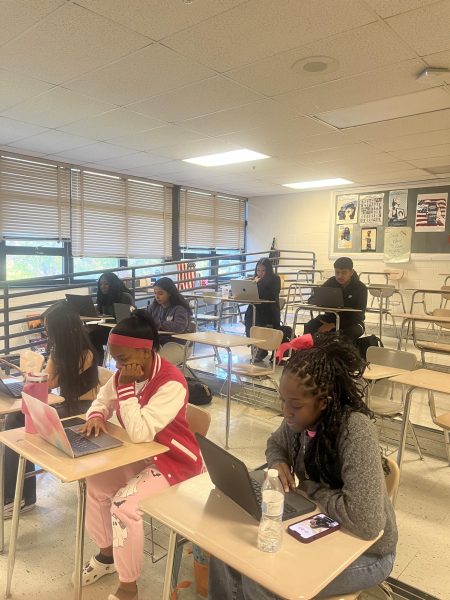MCPS Robinson essay response
Montgomery County Public Schools is often said to be one of the best school systems in the country, with four schools reaching the national and topping regional rankings. But what about the other 22 schools? Are these schools getting what they need to move closer to the “big 4”?
In the past few years MCPS has faced criticism due to the widened achievement gap between racial groups and the comparably lower rankings of certain high schools, including schools in both the Northeast and the Downcounty Consortiums. Many schools such as Springbrook have higher ‘FARMS’ or free and reduced lunch rates, students with lower household incomes and average test scores that do not meet the county average. These statistics have sparked concerns throughout the community, leading to the formation of groups such as One Montgomery whose focus is to advocate for “high-needs” schools.
One Montgomery was created in the 2013 by a group of parents and community members who expressed concerns for the lower achieving schools in MCPS. Their website describes their commitment to “school equity as a means for creating a stronger community” in MCPS schools.
“We believe everything is connected. In other words, if you have strong schools that creates strong community and strong economy. So we think the biggest issue in this county is equity in education. Not all students have the same opportunities to take advantage of all that MCPS has to offer,” long-term substitute teacher at Springbrook and member of the One Montgomery leadership team Kathleen Indart said.
In order to strengthen the schools and therefore the community and economy, One Montgomery members believe that the ‘achievement gap’ or the difference in academic performance between racial, ethnic and socioeconomic groups, must be closed. The six principles of equity, leadership, access, diversity, community and partnership have been identified by the organization as their views on how to effectively combat the gap.
In MCPS, there are 11 schools identified to be underachieving according to low test scores and larger achievement gaps in comparison to the rest of the county. Springbrook is one of them.
“I believe that Springbrook is a very special place and I think we have a lot to add. We have a lot of strengths here with our student body, our teaching staff and so forth. I don’t believe we are getting the resources and the attention that we need for all of our students to be successful because of the changes in demographics and because of schools like Springbrook not having the family resources that other families have. I think that our students are not able to achieve to the levels that they should be able too,” said Indart.
Many agree with Indart, including Springbrook alumnus, former SGA president and current senior at Yale University, Michael Robinson. Recently, Robinson published an essay entitled, “A Tale of Two Montgomerys” outlining the issues he and many other students in underperforming MCPS schools face.
“Simply put, I decided to write this piece because it is a necessary part of the dialogue. I spoke with some MCPS graduates now at Yale and there is this perception of MCPS as a flawless school system. But in certain parts of the county there is so much more they [MCPS] can be doing,” said Robinson.
Robinson is supporter of One Montgomery, working closely with the leaders and attending meetings when he is able. Similar to the beliefs of the organization, Robinson believes socioeconomic and racial factors as a core issue in the under achieving MCPS schools.
“Poverty usually leads to lower educational outcomes. Blacks and Latinos tend to have higher rates of poverty and so tend to have lower educational outcomes. But the fact that schools with a high minority percentage and high poverty percentage lag behind the broader school system should not be accepted. Education is one of those things that can break generational cycles of poverty and racial injustice. So pouring more resources into our high-needs school areas is the only way currently I can think to fix this situation,” argued Robinson.
Robinson credits his success to early education from the Head Start program along with reading and sports, including the athletic program at The Brook which helped to produce “ a ‘never quit’ mentality”.
One Montgomery and Robinson encourage students to get involved in these issues by going to meetings and events held by the organization. Both feel students should take a stand and advocate for their schools and their own education.
Robinson’s concluded his argument saying, “Every student, teacher, parent, and stakeholder should advocate for what they believe will foster the most successful, safe, and engaging school environment and accept nothing less. When I was a student, I pressed the administration hard on things I thought would benefit the student body and I hope like-minded individuals will step up, see the flaws in the current system, and advocate for a change. Join the SGA, petition, protest, advocate. That is a student’s right and responsibility.”



